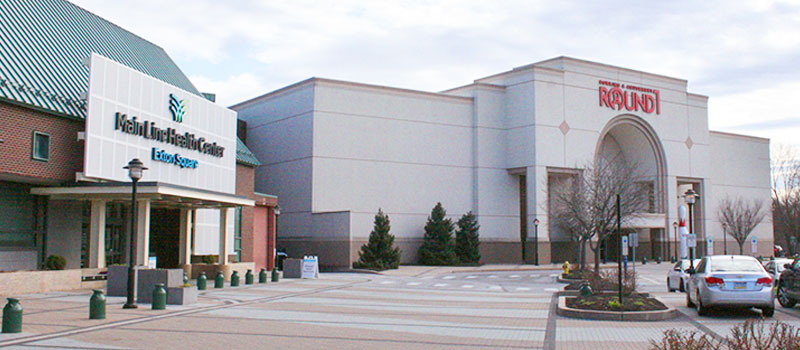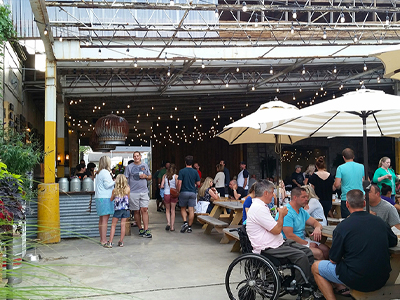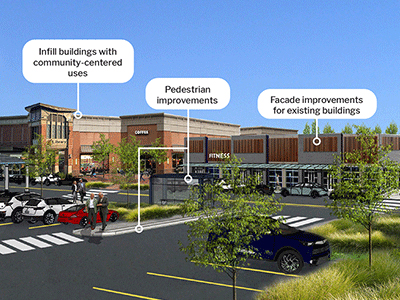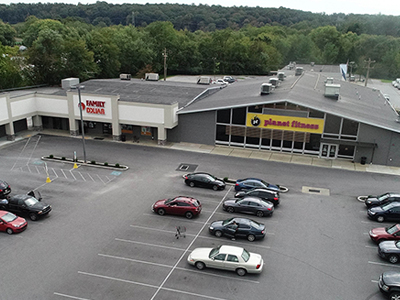Greyfields are vacant or underutilized former commercial spaces.
How it Works
Greyfields occur when commercial and retail properties become underutilized. Greyfields can occur due to changing market demand, decreased buying power in nearby areas, changes in consumer buying habits, lack of investment by property owners, or architecture that no longer meets market demand. Properties do not have to be vacant to be considered greyfields; for example, landlords may rent to low rent tenants, such as flea markets.
Suburban shopping centers, malls, big box stores, and historic storefronts are especially susceptible to becoming greyfields as their special layouts and/or location might no longer meet current trends and market demand. Approximately 18% of malls in the US are considered greyfields, and this figure is likely to increase after the effects of COVID-19 on physical retail spaces.
Greyfields can have immediate detrimental effects on the local community and economy; however, they can also present large development opportunities. Greyfields can be physically unattractive, lower property value in the area, and cause decreased tax revenue. However, many greyfields are large sites that offer ideal opportunities for large-scale planned development projects.
The Creamery, a pop-up beer garden in Kennett Square Borough, is an example of a successful community gathering place.
Benefits
Economic Development
Redevelopment of greyfield sites into viable uses generates additional tax revenue, creates both temporary construction jobs and permanent jobs, and attracts additional visitors and residents.
Efficient Utility Use
Greyfield sites have existing utilities, eliminating the need to make costly utility extensions. They also often have excellent access to the community's highway system and higher-volume roads.
Community Revitalization
Existing greyfields frequently have negative impacts on nearby property values. Redevelopment often has a positive domino effect on nearby properties.
Open Space Preservation
Greyfield redevelopment can support open space preservation by allowing for redevelopment of existing sites, thus supporting compact growth in an already developed location, instead of development of green sites.
Public Safety
Public safety and quality of life are improved by redeveloping abandoned and underutilized sites into more attractive and safe places.
Planned Development Potential
Many greyfields are shopping centers or malls, which offer large areas of land well-suited for mixed-use infill development.
According to the county's land use vision, Chester County retail areas will maintain their place as centers of commercial activity in our communities while adjusting to changes and new realities in the commercial real estate market. Underutilized or aging retail areas will revitalize by including a greater mixture of uses, creating more green space, and creating a 'third place' for residents to gather outside of the home or office environment.
Get Started
Despite high potential, hindrances often impede greyfield redevelopment without intervention. Municipalities should proactively work to overcome these development roadblocks. Municipalities can begin by identifying potential greyfield sites and prioritizing sites for redevelopment. Priority redevelopment sites along with desired uses should be identified in planning documents including comprehensive and economic development plans. Municipalities can further assist with greyfield redevelopment by proactively marketing greyfield sites, creating flexibility in zoning, providing financial incentives, and ensuring efficient review processes.
Often, greyfield sites have remained undeveloped due to real or perceived unattractiveness for development. This could be caused by site location, site size and shape, lack of transportation and highway access, perception of the site, or building design or layout. By mitigating hindrances to development, municipalities can generate opportunities for redevelopment:
- Municipalities should work to connect greyfield sites to nearby amenities through multi-modal connections including trails, bike lanes, and roadways.
- By creating flexibility in zoning, municipalities can create new opportunities for development. Formerly commercial properties such as malls, shopping centers, or offices can be converted to mixed use, offices, residential apartments, or townhouses. Greyfield sites can also be repurposed into light industrial facilities such as IT, communications, or last mile services. Mixed-use centers can create vibrant community areas and support local businesses. Municipalities can allow these uses by right as appropriate and create expedited review processes for greyfield sites.
- Municipalities can offer financial incentives such as tax abatements or Tax Increment Financing funding to help bridge financing gaps.
- Municipalities can market greyfield sites to help to remove perceptions that sites are not developable. Requests for proposals and direct developer outreach can help find developers for a greyfield site.
Planet Fitness redeveloped a large greyfield vacant box store into a gym.
Considerations
Perception of Risk
Greyfield sites may be perceived as lacking development opportunities due to blight, crime, health and safety risks, low property values, and challenging leases. Municipalities can mitigate negative perception by working with developers and residents to envision the future for these sites.
Commercial District Revitalization
Greyfield sites are often located in commercial strips along local highways that developed in a haphazard manner over time. Redevelopment of these sites provides an opportunity for the municipality to work with the business community and property owners to consolidate driveways, improve pedestrian access, install district-wide signage, and create a common landscaping and streetscaping design.
Regulatory Constraints
Zoning may restrict possible reuse opportunities or require variances. Municipalities can encourage redevelopment through maintaining flexibility at the regulatory level. Municipalities should encourage adaptive reuse in zoning and subdivision ordinances and related design guidelines. Regulatory provisions should include the allowance of mixed uses; solutions for parking requirements such as off-site satellite and shared parking facilities; incentives for combining multiple adjoining greyfield sites into one development; and requirements for shared driveways and interconnected parking lots.
Property Ownership
Greyfield sites will often be privately owned. Municipalities may need to work with property owners to market and redevelop their sites. Collaboration with property owners should be completed before identifying sites for redevelopment in planning documents.
Neighborhood Compatibility
Greyfields are usually in established residential neighborhoods and commercial districts. Municipalities should ensure redevelopment of greyfield sites remains compatible with the existing area.

Tredyffrin Township
The original community level shopping center in Chesterbrook was redeveloped in the late 2010s into a neighborhood shopping center and townhouse development known as Parkview at Chesterbrook.

West Whiteland Township
At the Exton Square Mall, the old Kmart site was redeveloped into a Whole Foods grocery store and the Hanover Exton Square apartment building.
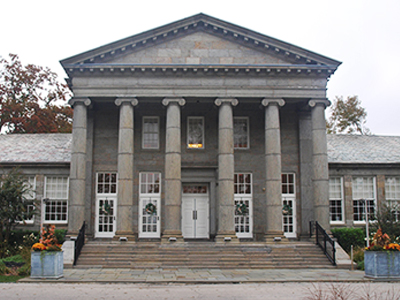
Newtown Square, Delaware County
The Ellis Preserve at Newtown Square is a master planned community completed in 2018, which renovated a former office park into a mixed-use community. The project preserved a historic school for girls through renovation into office, event, and fitness space. The community now includes commercial, hotel, residential, and office buildings.
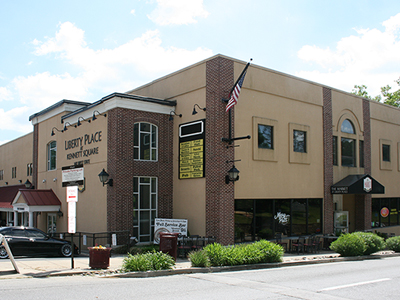
Kennett Square Borough
The Market at Liberty Place redeveloped a vacant office building into a market and modern office space. This example demonstrates a renovation of an obsolete office building into a modern mixed-use property. The property, located at 148 W State Street, was built in 1948 from a Liberty ship used in World War II. The building was first used as a department store followed by a furniture store then most recently the headquarters for Genesis Healthcare. After Genesis Healthcare relocated to the Franklin Center, the building sat vacant for three years. LGB Properties purchased and renovated the building into a modern open air market along with high end office space on the top and bottom floors. The market was developed to accommodate around nine to eleven vendors, which helps to provide opportunities for small businesses and divide up the large space into smaller rental spaces. The project had a catalytic effect on development in the area, with future mixed-used developments occurring in the area. The borough worked to build off of this development by adding sidewalk extensions and marketing the area for development.
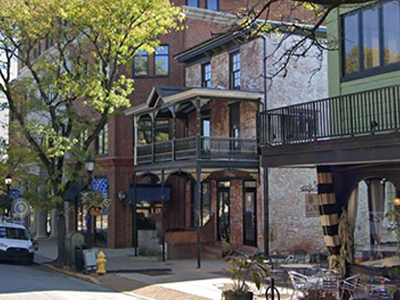
Kennett Square Borough
120 East State Street was renovated from a vacant building, which had formerly been a café, into coworking space. As is common for historic main street buildings, the building had a small footprint, which is less desirable for modern enterprises. To overcome the difficulties of development, the borough helped to facilitate the project by issuing a revolving loan of $100,000 to help the coworking business get started. Additionally, the borough had issued a revolving loan to the former owner who underwent renovation of the building.

City of Coatesville
190 West Lincoln Highway is currently a vacant boarded up property. The property is proposed to redevelop into an innovation center. The proposed projects demonstrate public entities assistance in redeveloping greyfield sites into productive uses. The Commonwealth of Pennsylvania through the Department of Community and Economic Development (DCED) designated the property as a Keystone Innovation Zone (KIZ) in 2021. The KIZ provides tax credits for for-profit companies operating within the zone. The current building, a former Lukens Steel advertising and marketing office building, will be renovated into The nth Innovation Center an entrepreneurial incubator. The project represents the first major commercial construction project in Coatesville in 50 years and is expected to spur additional development while creating both temporary construction and permanent jobs.


